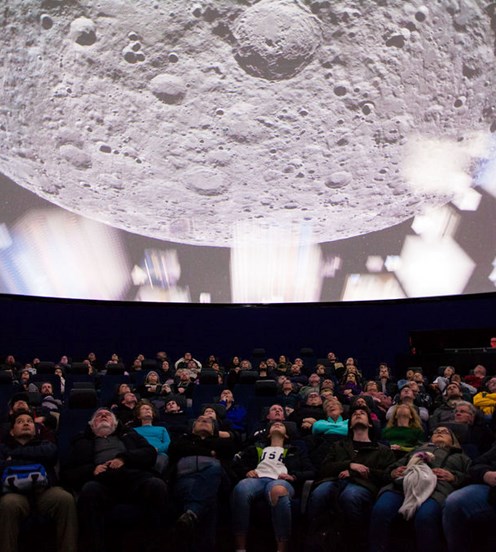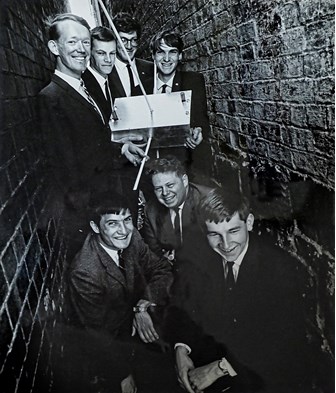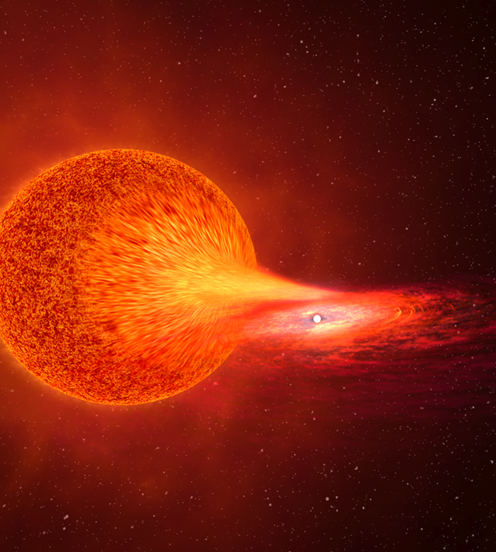Melbourne sun times
| Date |
Rise / Solar noon* / Set (day length) |
| Sat 1st |
6.32am / 1.33pm / 8.33pm (14.00 hrs) |
| Tue 11th |
6.44am / 1.34pm / 8.23pm (13.39 hrs) |
| Fri 21st |
6.55am / 1.33pm / 8.11pm (13.16 hrs) |
| Sat 29th |
7.03am / 1.32pm / 8.01pm (12.57 hrs) |
*When the Sun is at its highest crossing the meridian or local longitude.
Moon phases
| Phase |
Date |
| First Quarter |
Friday 2nd |
| Full Moon |
Saturday 9th |
| Third Quarter |
Friday 16th |
| New Moon |
Saturday 24th |
This month’s Moon apogee (furthest from Earth) is on Wed 26th at 406,278 km and perigee (closest to Earth) on Tue 11th 360,461 km.
Planets
It could be possible to see all five visible planets this month; two in the west after sunset, and three in the east before dawn.
Mercury is low in the west at sunset.
Venus is bright in the west above Mercury.
Mars is high in the east before dawn.
Jupiter is below Mars in the east.
Saturn is low in the east below Mars.
Meteors
The alpha-centaurids and beta-centaurids are active from 2nd to 25th peaking on the 8th. They are different, but it is difficult to distinguish between them. Occurring near the Two Pointers, they are not strong showers but often have fireballs and persistent trails. 25 per hour can occur but 6 per hour has been more usual.
Stars & Constellations
Orion, the hunter, is high in the north-east but seen in the southern hemisphere upside down with three stars of his belt also known as the Saucepan. Above is blue-white supergiant star Rigel as one of his feet, and below is the red supergiant Betelgeuse marking one of his shoulders.
High in the east is Sirius, the brightest star at night in Canis Major (Greater Dog). To the north west is Taurus, the Bull, with the red giant star Aldebaran, and in the north is the Pleiades Cluster, a group of blue giant stars that in many cultures represents a group of women.
The Southern Cross and the Two Pointers, (Alpha & Beta Centauri) are low in the south-east. The two nearby galaxies, the Magellanic Clouds, are high in the sky looking like fuzzy patches and best seen away from city lights.
International Space Station
ISS orbits every 90 minutes at an average distance of 400 km and appears as a bright star moving slowly across the sky. Here are some bright passes expected this month over Melbourne and Central Victoria:
- Thursday 13: 6.11am–6.17am moving West-South-West to North-East.
- Friday 14: 5.23am-5.26am moving South-West to North-East, and also 10.05pm-10.07pm moving North-West to North-North-West.
- Monday 17: 9.18pm-9.25pm moving West-North-West to South-East.
For predictions go to heavens-above.com.
On this day
1st 2003, the Space Shuttle Columbia (USA) disintegrated on re-entry killing all seven astronauts and halting the shuttle program for over two years.
1st 1970, US astronomer Vera Rubin finds evidence of ‘dark matter’ by studying motion of stars and galaxy rotation not consistent with Newton’s laws.
3rd 1996, Luna 9 (USSR) made first soft-landing on moon and sent first panoramic images from the Ocean of Storms.
4th 1976, Lunar Orbiter 3 (USA) launches to the moon to select Apollo landing sites.
5th 1963, Dutch astronomer Maarten Schmidt discovers quasars (quasi-stellar radio sources).
7th 1979, Pluto moves inside Neptune’s orbit for the first time since its 1930 discovery.
8th 1969, the Allende meteorite, the largest carbonaceous meteorite found, lands near the village of Allende, Mexico.
9th 1986, first module of Mir space station (USSR) is launched into Earth orbit.
9th 1986, last visit of Comet Halley met by flotilla of probes (notably ESA’s Giotto) with comet’s next return due mid-2061.
9th 1473, birth of Nicholas Copernicus, famous for his sun-centred theory in On the Revolutions of the Celestial Spheres (1543) which triggered the Copernican Revolution.
9th 1975, Soyuz 17 (USSR) returns to earth setting Soviet record of 29 days in space.
11th 2003, first measurements using WMAP (Wilkinson Microwave Anisotropy Probe) data to reveal relic Big Bang temperature as a variation across the universe.
12th 1947, 100 tonne iron meteorite falls in Sikhote Alin, southeast Russia. Largest in recorded history, brighter than the sun, with deafening sound and a smoke trail lasting several hours.
12th 1961, Venera 1 probe (USSR) launched to Venus by Soviet Union.
12th 2001, NEAR Shoemaker (USA) is first probe to land on an asteroid - 433 Eros.
13th 2004, discovery of ‘largest diamond’, white star BPM 37093, is announced.
14th 1990, Voyager 1 (USA) takes famous ‘pale blue dot’ picture of Earth as it looks back while speeding out of solar system.
15th 1564, birth of astronomer, physicist and engineer Galileo Galilei in Pisa, Italy. Supported heliocentric solar system, and studied motion, telescopes, moons of Jupiter, rings of Saturn, phases of Venus, Sun spots, and features of the moon.
15th 2013, 20meter Chelyabinsk meteor explodes 30km over Southern Urals, Russia, travelling at 60,000kph with shock wave damaging buildings and causing many injuries due to flying glass.
16th 1771, Charles Messier’s catalogue of 100 deep space objects.
17th 1965, Ranger 8 (USA) probe launched to image the moon in aid of Apollo landings.
18th 1930, Clyde Tombaugh (USA) discovers Pluto using a blink comparator in a systematic search for the supposed ‘Planet X’ beyond Neptune.
20th 1962, first American astronaut into orbit, John Glenn, in Mercury Friendship 7 in three orbits lasting almost 5 hours.
22nd 1632, Galileo publishes Dialogue Concerning the Two Chief World Systems which compared solar system models and led to conflict with and censure by the Catholic Church.
23rd 1987, SN1987A, closest and brightest supernova since 1054 observed in Large Magellanic Cloud 168,000 light years away. Visible to naked eye for months.
24th 1968, post-graduate student Jocelyn Bell (Northern Ireland) discovers first pulsars.
26th 1966, first Saturn 1B rocket launch, which led to Saturn V Apollo missions.
27th 1942, JS Hey (UK) discovered radio emissions coming from the Sun.
28th 1997, first evidence for gamma ray bursts (GRB) as extra-galactic energy sources



